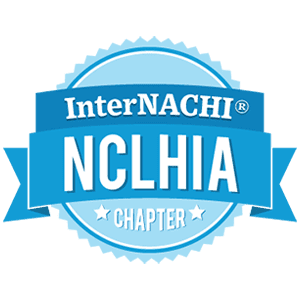Introduction – Why Radon Testing Matters
When buying a home, you check for structural issues, faulty wiring, and plumbing problems—but what about radon? Radon is an invisible, odorless gas that can be harmful to your health, and the only way to detect it is through testing. Whether you’re a homebuyer, seller, or current homeowner, radon testing is a simple yet essential step in ensuring the safety of your home.
In this blog, we’ll break down what radon is, why it’s dangerous, where it’s most common, and how testing works.
What Is Radon?
Radon is a naturally occurring radioactive gas that forms from the breakdown of uranium in soil, rock, and water. It seeps into homes through cracks in the foundation, sump pumps, crawl spaces, and other entry points.
Why is radon dangerous?
• It’s the second leading cause of lung cancer in the U.S., after smoking.
• Long-term exposure, even at low levels, can increase health risks.
• It has no smell, taste, or visible signs, making it undetectable without testing.
Where Is Radon Most Common?
Radon levels vary based on geography. Some regions naturally have higher concentrations due to soil composition. The EPA provides a radon zone map to help homeowners identify high-risk areas.

Key Facts About Radon Risk Areas:
• The EPA classifies areas into three zones, with Zone 1 being the highest risk.
• Homes in high-risk zones are more likely to have elevated radon levels, but radon can be present anywhere—even in low-risk areas.
• Testing is the only way to know if a home has a radon issue.
Do I Need a Radon Test?
Radon testing is recommended for all homes, but it’s especially important if:
✅ You’re buying a home – You want to ensure it’s safe before moving in.
✅ You’re selling a home – A radon test can give buyers confidence and prevent surprises.
✅ You live in a high-risk area – Homes in certain regions have naturally higher radon levels.
✅ Your home has never been tested – Radon levels can change over time due to foundation shifts or new construction nearby.
How a Radon Test Works
A radon test is simple and non-invasive but must follow proper procedures:
• Placement: The test is set up in the lowest livable area of the home (typically a basement or first floor).
• Duration: The test must remain undisturbed for at least 48 hours.
•Types of Tests:
• Short-term test: Provides quick results (2-7 days).
• Long-term test: Measures radon levels over 90+ days for a more accurate reading.
After testing, if radon levels exceed 4.0 pCi/L (picocuries per liter), the EPA recommends mitigation.
What If My Home Has High Radon Levels?
If your radon test shows levels at or above 4.0 pCi/L, the EPA recommends mitigation to reduce exposure. Fortunately, radon mitigation systems are effective and affordable, helping to lower radon levels and improve air quality.
Common Radon Mitigation Methods:
• Sub-Slab Depressurization – The most common method, using a vent pipe and fan system to pull radon gas from beneath the home and safely release it outside.
• Sealing Entry Points – While not a standalone solution, sealing cracks in the foundation and walls helps prevent radon from entering.
• Crawl Space Ventilation – Homes with crawl spaces may require ventilation or a special barrier system to limit radon buildup.
Once a mitigation system is installed, follow-up testing ensures radon levels remain low over time.
Protect Your Home and Health with Radon Testing
Radon is a hidden danger, but testing is the only way to know if your home is safe. Whether you’re buying, selling, or simply want peace of mind, a radon test is a smart investment in your home and health.
At Sierra Delta Home Inspections, we provide professional radon testing to help homeowners detect and address radon concerns before they become a problem.
📢 Schedule your radon test today and breathe easy knowing your home is safe!
Contact us today to book your radon test!



.png)